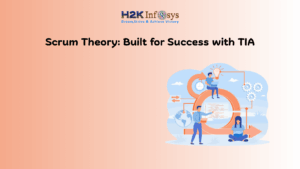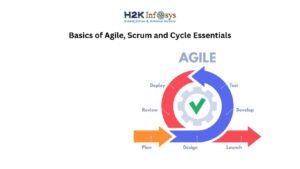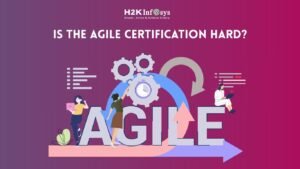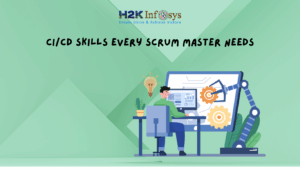If you want to build a new support system in your organisation, you need 2 main components and that is Agile Metrics and Efficiency. You need to have accuracy, vision, and an in-depth understanding of the fine line that separates efficiency from agility. This will include carefully planning procedures that enable you to make prompt decision-making and efficient workflows. Using the right technologies (like AI-powered chatbots and complex ticketing systems as examples) enables your team to expertly handle a large variety of inquiries. You can check out our Agile certification free course online to learn more.
Agility is very important; and when I say Agility, I mean being proactive, responsive, and prepared to accept quickly evolving technology and constantly evolving client expectations. This could mean the difference between success and failure. Using Agile Metrics support systems is therefore important because they are quick to adjust to changing market trends, consumer preferences, and technological advancements.
Agility is also very crucial especially in today’s world of customer support. It’s all about having the flexibility to quickly adjust to changing market conditions and consumer demands. Agile Metrics in a new support organisation begins with adaptability and a change-embracing mentality.
Give your support teams the freedom to decide in the moment to attain agility. Establish a culture where it is normal to recognize accomplishments and to promote creativity and innovation. Make an investment in training that gives your staff the abilities they need to respond to a variety of client questions.
On the other hand, the foundation of any successful support organisation is efficiency. It’s about making sure that every interaction matters, streamlining procedures, and making prudent use of resources. Not only does an effective support system fix problems, but it does so in a way that optimises value for the client and the company.
Efficiency is the cornerstone that supports agility. It involves streamlining procedures and allocating resources to deliver efficient, timely assistance. Streamlined procedures and clearly defined workflows are the foundation of efficiency.
Achieving a balance between efficiency and agility is the difficulty Agile Metrics.
An overly rigid approach to efficiency may stifle creativity, yet an overabundance of flexibility without structure can result in chaos. The knack lies in identifying the balance. It requires balancing!
Metrics are more than just numbers on a spreadsheet; they are the lifeblood of the business and are essential to determining equilibrium and keeping balance. Key Performance Indicators (KPIs) such as customer satisfaction scores, agent productivity, response times, and resolution rates can be measured to get important insights into the efficacy.
The insight describes the support plan aimed at achieving the ideal balance. Every metric tells a story about the customer’s journey through our ecosystem of assistance. It gives us the ability to customise interactions, identify problem areas, and improve each one.
Making Data-driven decisions is the foundation for achieving Agile Metrics and efficiency. You can do this by recognizing customer pain points, and facilitating continuous improvement and optimization. It offers concrete information on a range of customer service performance metrics and how they relate to your organisational objectives. This information also serves as the basis for the allocation and optimisation of resources, as well as for strategic decision-making.
You can use technology to become more efficient especially now in the digital age. For example, you can Install customer service software that uses data analytics to deliver insights and automates repetitive operations. But keep in mind that you using technology is meant to complement your human input rather than take its place.
The support agents present in your organisation are your front-line heroes. For instance, giving children the appropriate resources, instruction, and independence. You have to make sure to create an environment where learning Agile Metrics never stops and each agent feels prepared to tackle any challenge that comes their way. Fostering a culture of experimentation and creativity within your team is the foundation of agility. Accept that change can be a chance for personal development and always welcome new tools and methods.
Honestly, it can sometimes be difficult to find and keep knowledgeable support representatives that possess the ideal balance of soft skills, technical knowledge, and a customer-focused attitude. This necessitates that you provide extensive training programs that give your agents the skills and information they need.
It can also be difficult to seamlessly integrate the appropriate technologies and immediately guarantee immediate increase. But the truth is inadequate training or the wrong tools will result in inefficiency. Therefore, you have to be careful when finding technologies that support the objectives of your company.
When you are building a new support group, it is critical that you remain focused and keep the wider vision in your mind. Agility and efficiency must be balanced, but so must talent acquisition and development, technology adoption, and integration (which are all essential components).
Note that when you build a new support group, you are building an experience rather than merely a mechanism. You are building the foundation for a support ecosystem that is capable of navigating the complexities of the modern world.
Conclusion Finally, creating a new support organisation involves striking a balance between the foundation of efficiency to provide structure to your efforts and the agility to grasp the ever-changing client situation. Finding the ideal balance between efficiency and agility will help your support organisation not only survive in a constantly changing environment, but also grow in the future. To learn more about Agile Metrics, check out our online Agile scrum training.





























